Did you know that a hypothesis test for a sample mean is the same thing as a one sample t-test?
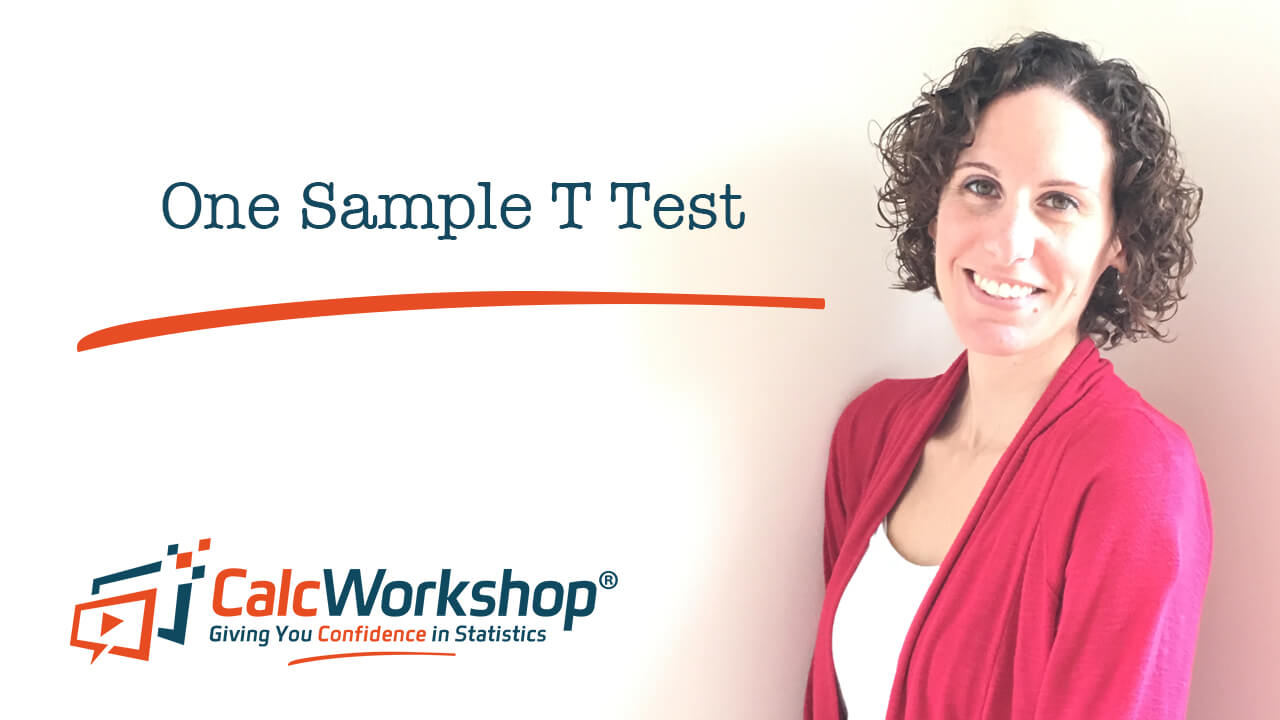
Jenn, Founder Calcworkshop®, 15+ Years Experience (Licensed & Certified Teacher)
Learn the how-to with 5 step-by-step examples.
Let’s go!
What is a One Sample T Test?
A one sample t-test determines whether or not the sample mean is statistically different (statistically significant) from a population mean.
While significance tests for population proportions are based on z-scores and the normal distribution, hypothesis testing for population means depends on whether or not the population standard deviation is known or unknown.
For a one sample t test, we compare a test variable against a test value. And depending on whether or not we know the population standard deviation will determine what type of test variable we calculate.
T Test Vs. Z Test
So, determining whether or not to use a z-test or a t-test comes down to four things:
- Are we are working with a proportion (z-test) or mean (z-test or t-test)?
- Do you know the population standard deviation (z-test)?
- Is the population normally distributed (z-test)?
- What is the sample size? If the sample is less than 30 (t-test), if the sample is larger than 30 we can apply the central limit theorem as population is approximately normally.
How To Calculate a Test Statistic
Standard Deviation Known
If the population standard deviation is known, then our significance test will follow a z-value. And as we learned while conducting confidence intervals, if our sample size is larger than 30, then our distribution is normal or approximately normal. And if our sample size is less than 30, we apply the Central Limit Theorem and deem our distribution approximately normal.
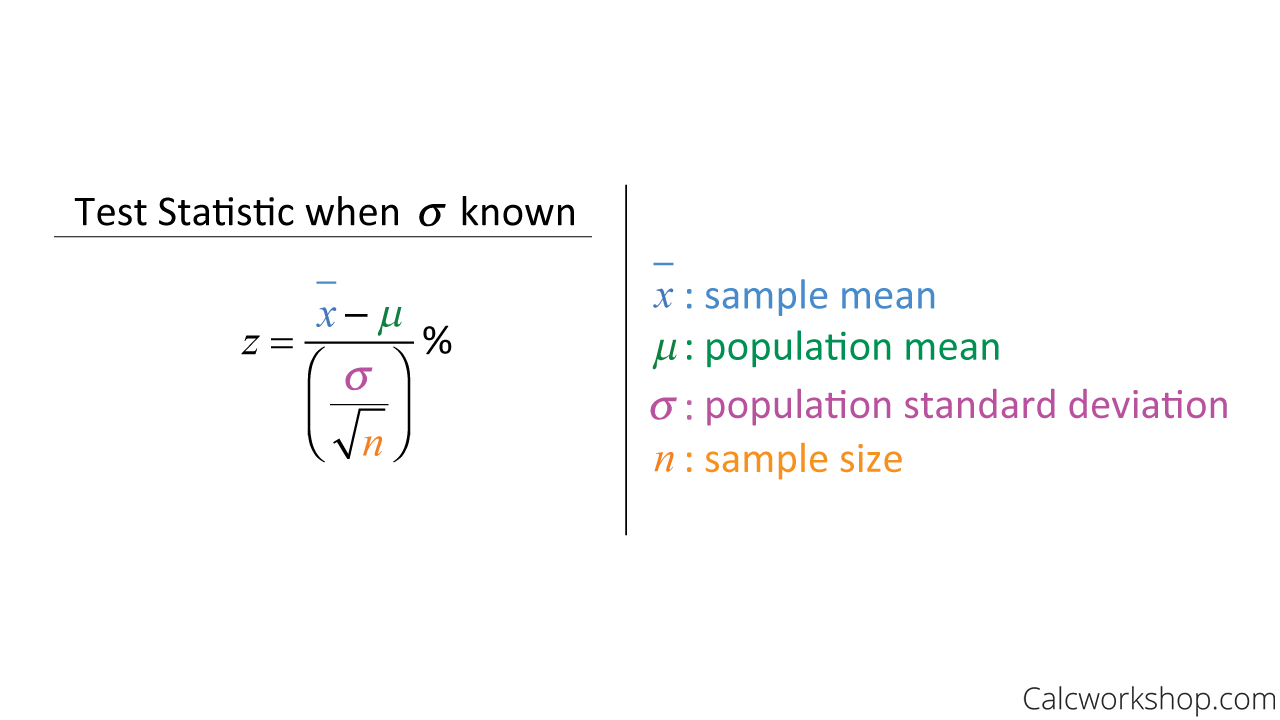
Z Test Statistic Formula
Standard Deviation Unknown
If the population standard deviation is unknown, we will use a sample standard deviation that will be close enough to the unknown population standard deviation. But this will also cause us to have to use a t-distribution instead of a normal distribution as noted by StatTrek.
Just like we saw with confidence intervals for population means, the t-distribution has an additional parameter representing the degrees of freedom or the number of observations that can be chosen freely.
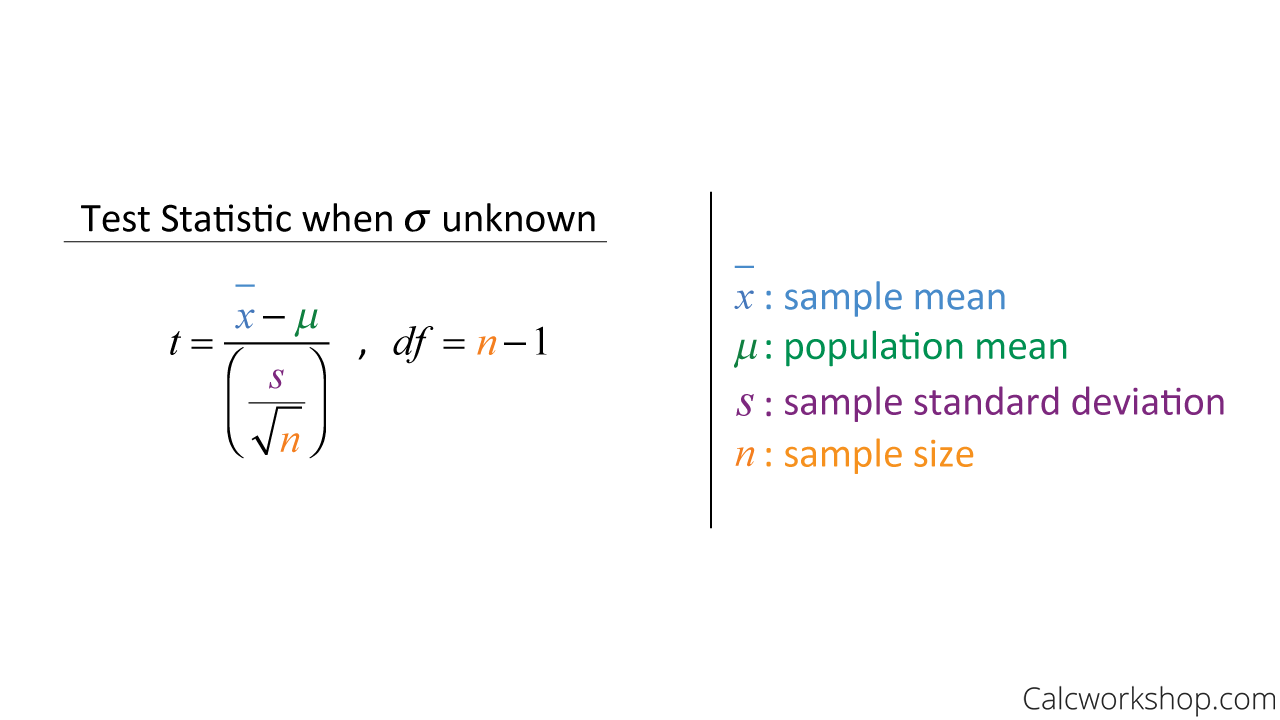
T Test Statistic Formula
This means that our test statistic will be a t-value rather than a z-value. But thankfully, how we find our p-value and draw our final inference is the same as for hypothesis testing for proportions, as the graphic below illustrates.
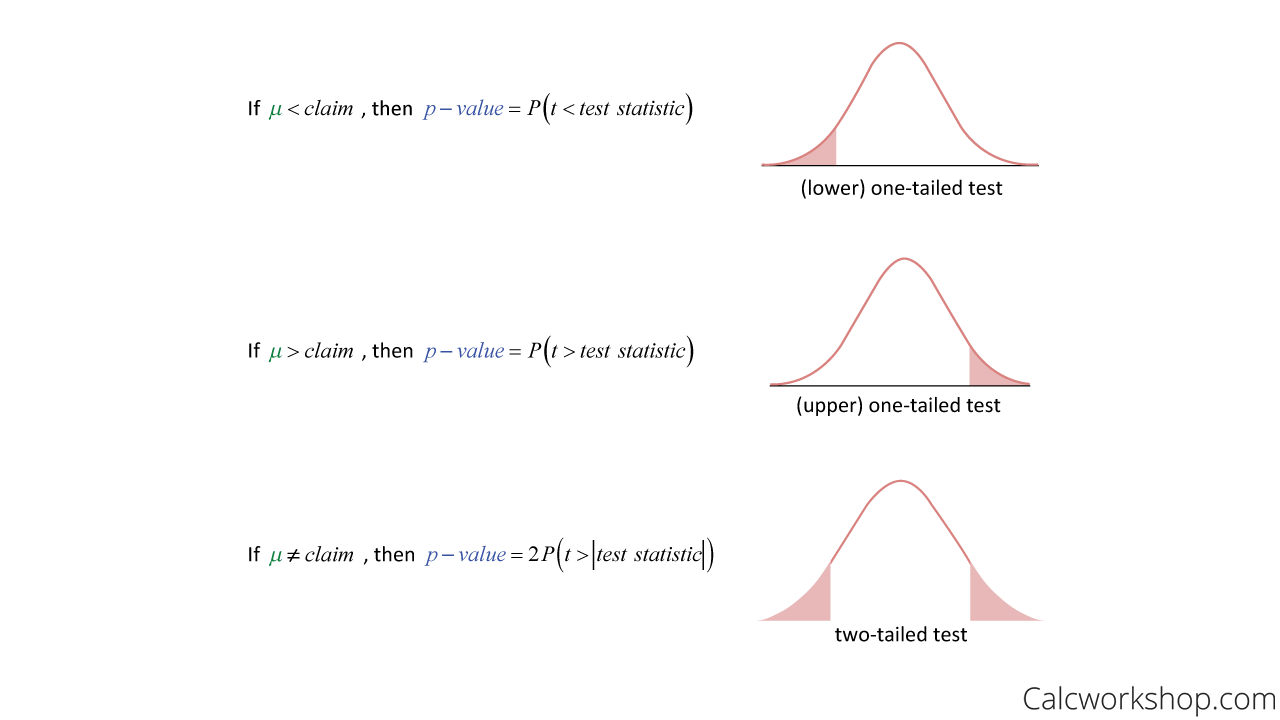
How To Find The P Value
Example Question
For example, imagine a company wants to test the claim that their batteries last more than 40 hours. Using a simple random sample of 15 batteries yielded a mean of 44.9 hours, with a standard deviation of 8.9 hours. Test this claim using a significance level of 0.05.
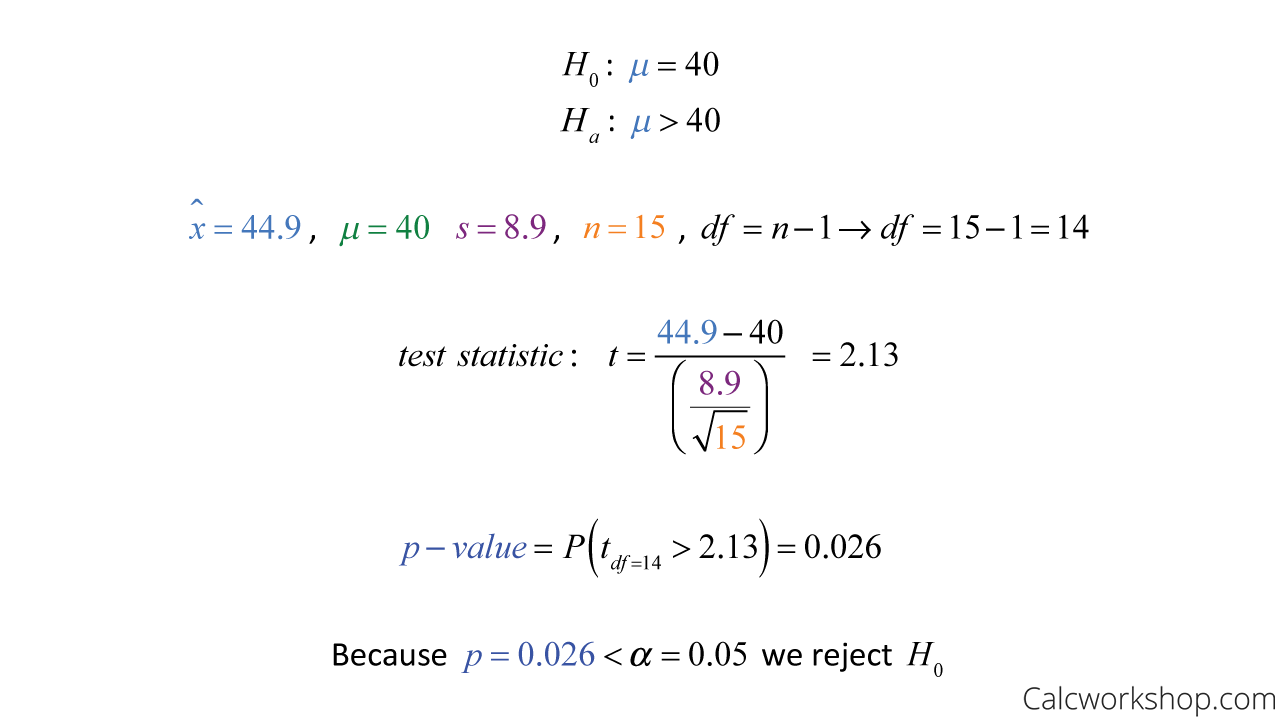
One Sample T Test Example
How To Find P Value From T
So, our p-value is a probability, and it determines whether our test statistic is as extreme or more extreme then our test value, assuming that the null hypothesis is true. To find this value we either use a calculator or a t-table, as we will demonstrate in the video.
We have significant evidence to conclude the company’s claim that their batteries last more than 40 hours.
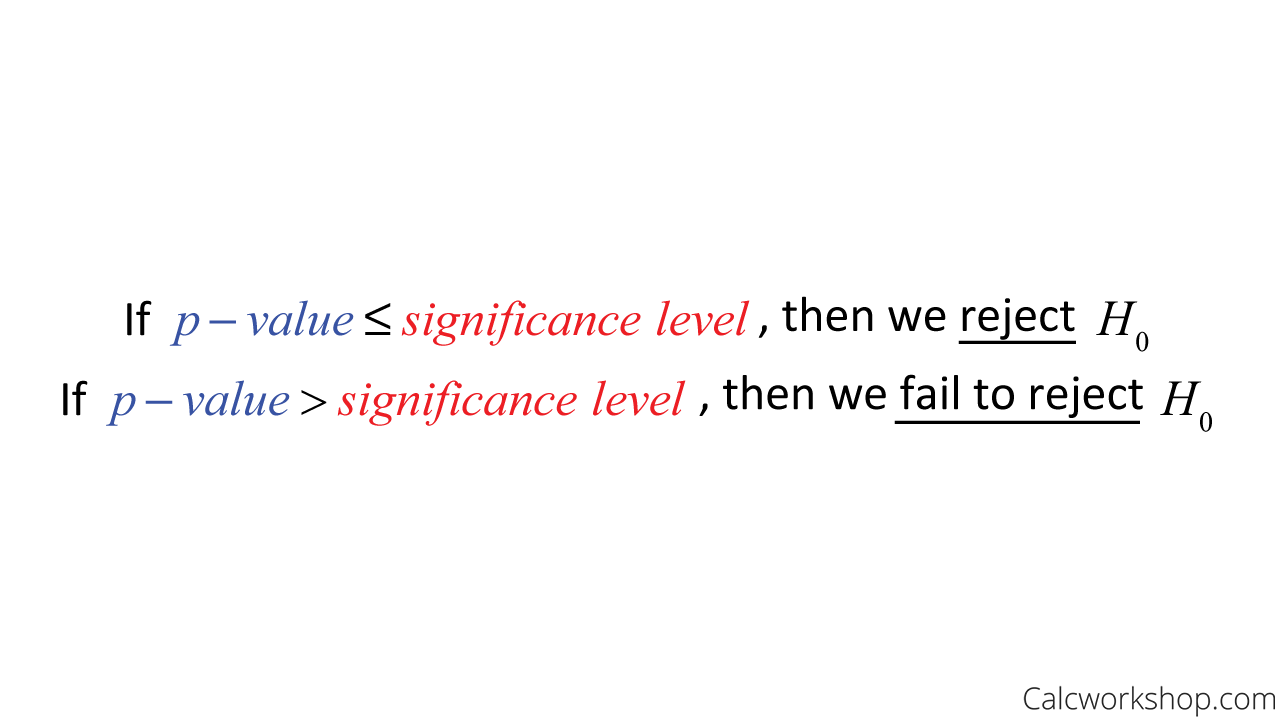
What Does The P Value Mean?
Together we will work through various examples of how to create a hypothesis test about population means using normal distributions and t-distributions.
One Sample T Test – Lesson & Examples (Video)
59 min
- Introduction to Video: One Sample t-test
- 00:00:43 – Steps for conducting a hypothesis test for population means (one sample z-test or one sample t-test)
- Exclusive Content for Members Only
- 00:03:49 – Conduct a hypothesis test and confidence interval when population standard deviation is known (Example #1)
- 00:13:49 – Test the null hypothesis when population standard deviation is known (Example #2)
- 00:18:56 – Use a one-sample t-test to test a claim (Example #3)
- 00:26:50 – Conduct a hypothesis test and confidence interval when population standard deviation is unknown (Example #4)
- 00:37:16 – Conduct a hypothesis test by using a one-sample t-test and provide a confidence interval (Example #5)
- 00:49:19 – Test the hypothesis by first finding the sample mean and standard deviation (Example #6)
- Practice Problems with Step-by-Step Solutions
- Chapter Tests with Video Solutions
Get access to all the courses and over 450 HD videos with your subscription
Monthly and Yearly Plans Available
Still wondering if CalcWorkshop is right for you?
Take a Tour and find out how a membership can take the struggle out of learning math.